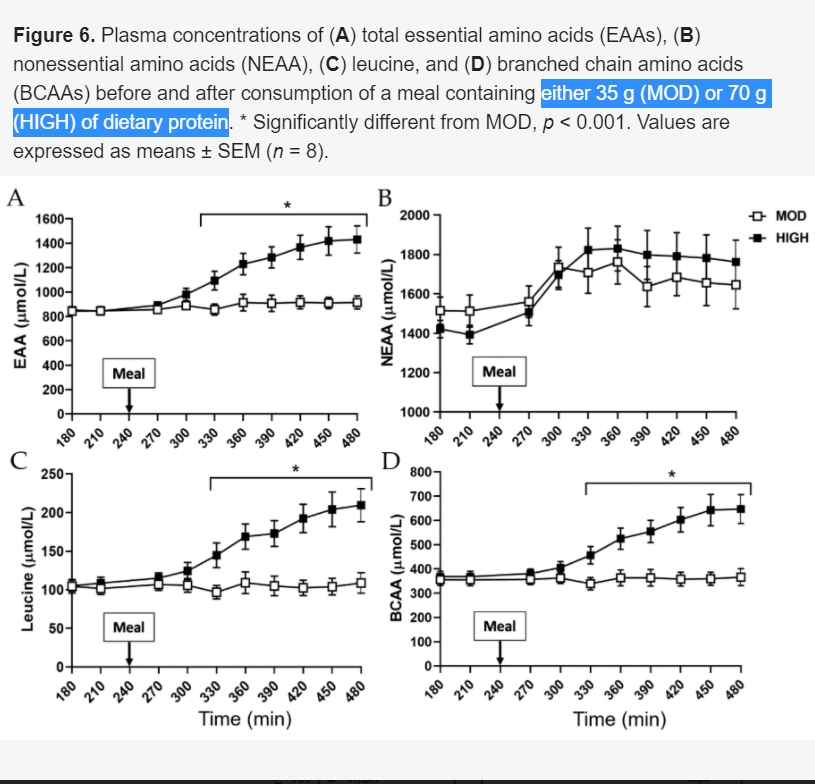by Sanghee Park Nutrients 2020, 12(11), 3276;
We have recently demonstrated in young adults that an anabolic response with mixed meal protein intake above ~35 g/meal, previously recognized as an “optimal” protein dose, was further stimulated. However, it is unknown if this applies to older adults. We therefore examined anabolic response to a mixed meal containing either 35 g (MOD, moderate amount of protein) or 70 g (HIGH, high amount of protein) in a randomized cross-over metabolic study in older adults (n =
The positive NB was achieved due mainly to the suppression of PB in both MOD and to a greater extent HIGH, while PS was only increased in HIGH. Consistent with the whole-body data, MPS was significantly higher in HIGH than MOD. Plasma concentrations of essential amino acids and insulin were greater in HIGH vs. MOD.
We conclude that in the context of mixed meals, whole-body anabolic response linearly increases with increasing protein intake primarily through the suppression of PB, and MPS was further stimulated with protein intake above the previously considered “optimal” protein dose in older adults.














